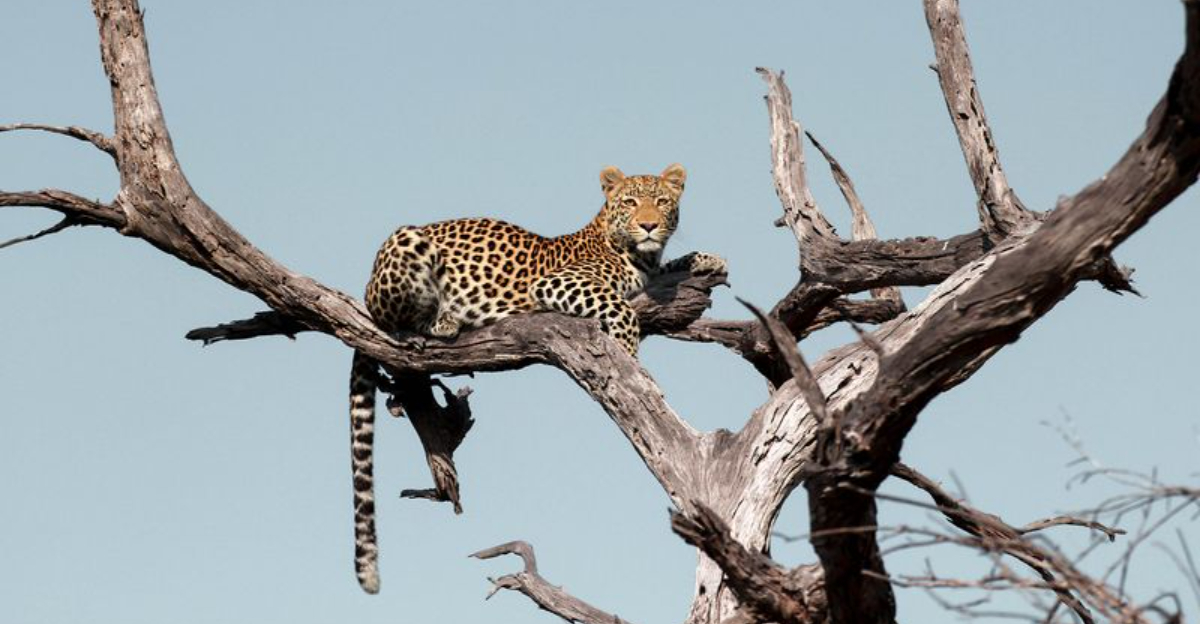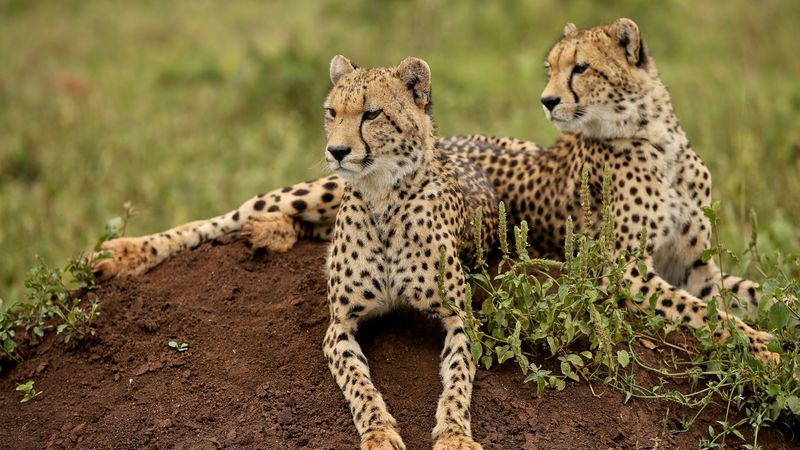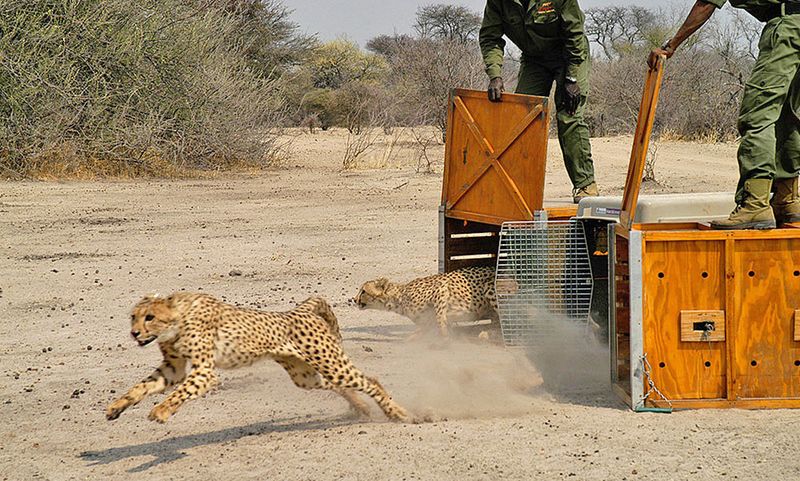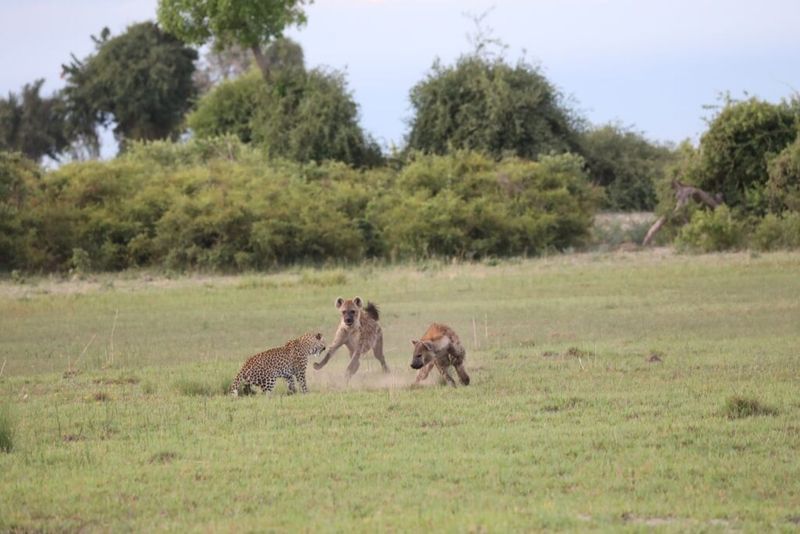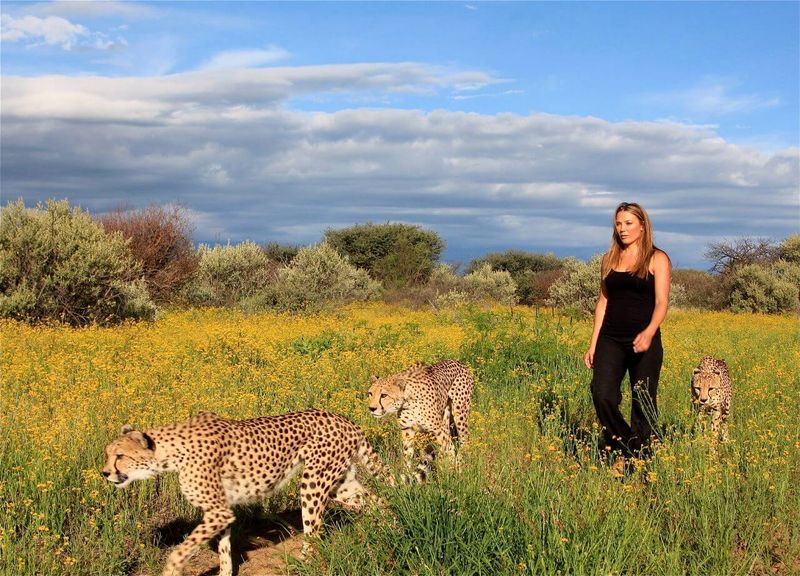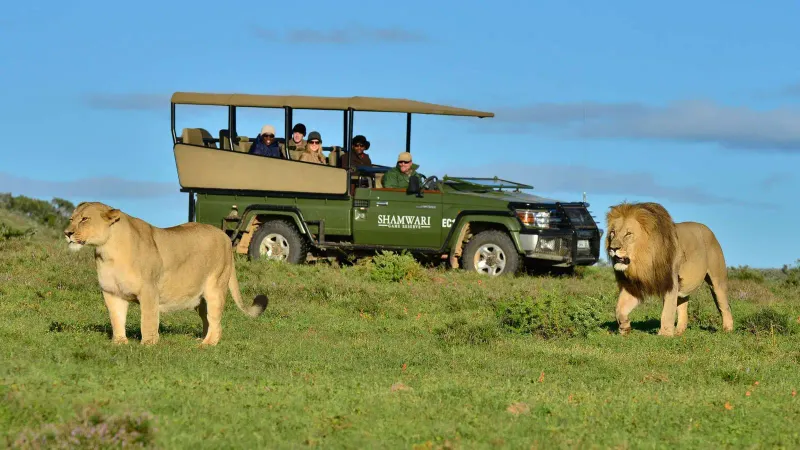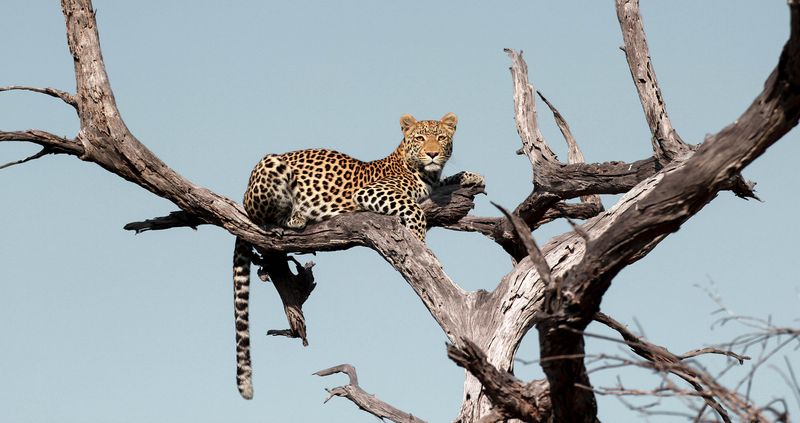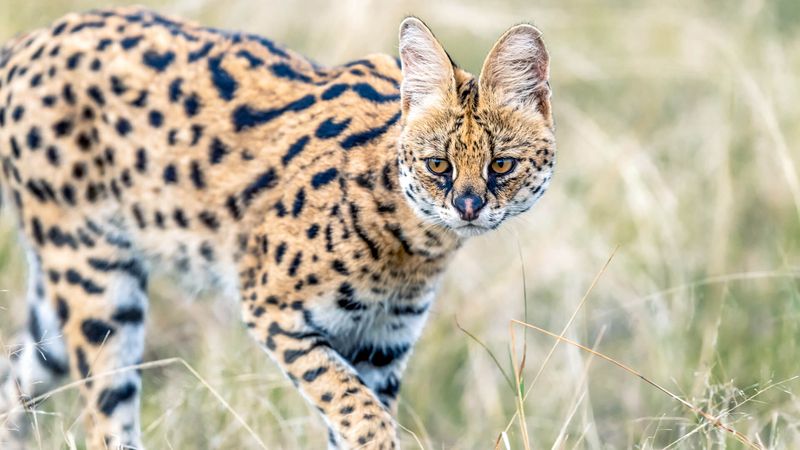📖 Table of Content:
- 1. Panthera & Wilderness Safaris – Kafue National Park, Zambia
- 2. Cheetah Conservation Fund (CCF) – Otjiwarongo, Namibia
- 3. Great Plains Conservation – Botswana, Kenya & Zimbabwe
- 4. Naankuse Wildlife Sanctuary – Near Windhoek, Namibia
- 5. Shamwari Big Five Game Reserve – South Africa
- 6. African Cat Project – Southern Africa
- 7. Masai Mara Big Cat Conservation – Kenya
Africa’s big cats—lions, leopards, and cheetahs—are among the continent’s most iconic and awe-inspiring creatures. Yet their survival hangs in the balance, threatened by habitat loss, poaching, and increasing conflict with human populations. Conservationists and ecotourism operators are working tirelessly to shift this trajectory, finding innovative ways to protect these predators while engaging and empowering local communities.
Responsible eco-tourism has emerged as a powerful tool in the fight to save Africa’s big cats. Rather than simply observing wildlife from afar, eco-conscious travelers are now participating in conservation efforts, contributing to research, and supporting initiatives that reduce human-wildlife conflict. The best ventures go a step further, channeling tourism revenue into long-term protection strategies and sustainable development for the people who live alongside these animals.
This article highlights seven pioneering eco-tourism projects that are making a tangible difference across Africa. Each combines conservation science with immersive travel, allowing visitors to witness the majestic presence of big cats while supporting their continued survival. These stories underscore how thoughtful travel can help ensure a future where Africa’s legendary predators continue to roam wild and free.
1. Panthera & Wilderness Safaris – Kafue National Park, Zambia
Set in the remote Busanga Plains of Kafue National Park, this partnership between Panthera and Wilderness Safaris is a striking example of conservation tourism in action. Visitors here don’t just go on safari—they engage with the science of big cat protection, learning directly from field experts about lion movement patterns, camera trap data, and anti-poaching patrols. By staying at Wilderness Safaris’ camps, travelers directly fund crucial research and community initiatives that safeguard lions, leopards, and cheetahs in the region. Special programs train local rangers and use SMART (Spatial Monitoring and Reporting Tool) technologies to track threats in real-time. The conservation model hinges on local engagement, with educational outreach in surrounding villages that builds understanding and support for wildlife. Guests leave not only with incredible wildlife sightings but also a deep appreciation for the effort it takes to keep predators safe. This immersive approach proves that tourism, when done responsibly, can be a force for good.
2. Cheetah Conservation Fund (CCF) – Otjiwarongo, Namibia
Founded by world-renowned conservationist Dr. Laurie Marker, the Cheetah Conservation Fund has become a global hub for cheetah protection. Located near Otjiwarongo in Namibia, CCF offers a dynamic experience that blends scientific research, education, and hands-on conservation. Tourists can walk through the center’s genetics lab, visit its model farm, or observe cheetahs up close in rehabilitation enclosures. A standout feature is the Livestock Guarding Dog Program, which supplies Anatolian shepherds to farmers to deter cheetah predation, significantly reducing retaliatory killings. CCF’s work also extends into environmental education, reaching thousands of Namibian children with messages of coexistence. Volunteer programs attract international participants eager to contribute to daily operations, animal care, and field data collection. This multifaceted approach has helped stabilize cheetah populations and continues to influence carnivore conservation efforts worldwide.
3. Great Plains Conservation – Botswana, Kenya & Zimbabwe
With a philosophy that marries luxury travel to ecological responsibility, Great Plains Conservation is a standout model of high-impact tourism. Established by National Geographic filmmakers Dereck and Beverly Joubert, the initiative uses revenue from bespoke safari experiences to support conservation across key big cat habitats. Their “Big Cats Initiative” addresses the decline of lions and leopards through habitat restoration, predator monitoring, and human-wildlife conflict mitigation. Camps like Selinda and Zarafa in Botswana offer guests the rare chance to view big cats in pristine settings, all while knowing their stay funds essential work on the ground. Great Plains also operates relocation programs, moving vulnerable animals from conflict zones into protected reserves. The foundation’s education and health initiatives in nearby communities foster goodwill and create allies for conservation. In combining storytelling, science, and sustainability, Great Plains redefines what responsible wildlife tourism can achieve.
4. Naankuse Wildlife Sanctuary – Near Windhoek, Namibia
Tucked just outside Namibia’s capital, Naankuse Wildlife Sanctuary serves as a refuge for orphaned and injured predators, particularly cheetahs and leopards. What sets Naankuse apart is its emphasis on rehabilitation and release—animals are not merely displayed but are prepared for a return to the wild whenever possible. The sanctuary’s research team studies predator behavior and movement patterns using GPS tracking collars, contributing valuable data to national conservation strategies. Visitors can take part in conservation activities ranging from food preparation to animal tracking, gaining a behind-the-scenes perspective. Naankuse also addresses human-wildlife conflict by relocating problem carnivores and engaging farmers in coexistence strategies. Their work extends into education through the Clever Cubs School, supporting San children with access to quality schooling. The holistic model connects conservation, community, and education into a single impactful mission.
5. Shamwari Big Five Game Reserve – South Africa
Located in the Eastern Cape, Shamwari Game Reserve exemplifies an integrated approach to big cat conservation. The reserve’s management focuses on restoring natural predator-prey relationships and maintaining ecological balance, which is essential for the long-term survival of lions and leopards. Guests on safari often encounter these magnificent animals while learning about the scientific monitoring behind their presence. Shamwari’s volunteer program is a key strength, drawing individuals from around the globe to assist with wildlife care, alien vegetation removal, and camera trap maintenance. Conservation education plays a vital role here, with school outreach programs aimed at building local environmental awareness. The reserve collaborates with veterinarians and researchers to provide top-tier care and monitoring for its wildlife. Through tourism, Shamwari has generated jobs and investment in conservation that reach well beyond its fences.
6. African Cat Project – Southern Africa
Emerging as a powerful funding and advocacy platform, the African Cat Project works across southern Africa to protect threatened feline species. It partners with established wildlife NGOs and researchers to enhance the rescue, rehabilitation, and tracking of big cats, especially in areas where local resources are limited. Tourists who visit associated sanctuaries or contribute to fieldwork help raise awareness and resources for this cross-border initiative. Donations support the purchase of satellite collars, veterinary supplies, and patrol vehicles that expand the reach of conservation teams. The project also supports education campaigns to dispel myths and foster empathy for predators among rural populations. Each dollar raised is strategically allocated, ensuring maximum impact per conservation dollar. By connecting passionate travelers with on-the-ground needs, the African Cat Project bridges gaps in funding and visibility for lesser-known but critical programs.
7. Masai Mara Big Cat Conservation – Kenya
In the heart of Kenya’s famed Masai Mara, Conservation Matters spearheads efforts to protect lions, leopards, and cheetahs from mounting threats. This initiative enlists travelers and volunteers to participate directly in wildlife monitoring, gathering data on movement, behavior, and population health. Working alongside Maasai community members, the project promotes coexistence strategies that reduce livestock losses and encourage wildlife stewardship. Guests contribute by helping with camera trap setups, analyzing spoor tracks, and logging predator sightings during their stay. Conservation Matters also engages youth through outreach programs that build the next generation of conservation advocates. The initiative is embedded in the Greater Mara Ecosystem, a biodiversity hotspot under pressure from development and climate change. Through science-backed tourism, Masai Mara Big Cat Conservation helps ensure that these apex predators remain a vital part of Kenya’s natural heritage.
